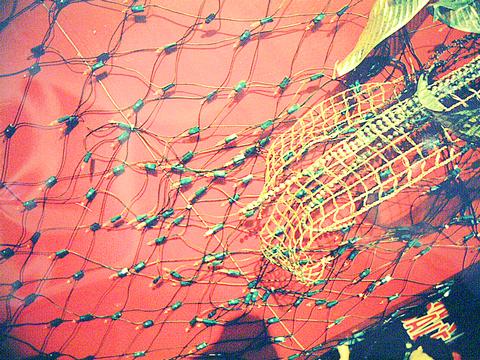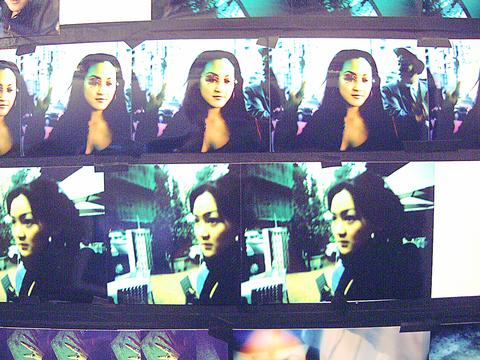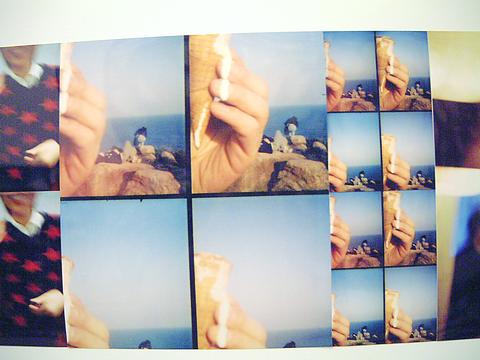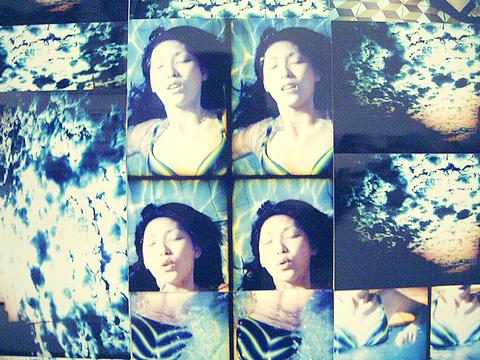Do you lomo or know someone who does?
The Lomo, short for Lomo Kompakt Automat, a cheap compact 35mm camera made in St Petersburg, Russia in the early 1980s, was originally intended for use by KGB agents due to its high light sensitivity under nighttime conditions. Instead of being used for covert purposes, millions of Lomos were mass-produced for the Soviet market and for export to Vietnam, Cuba and East Germany. Then, a group of Viennese artists, who had bought the cameras in Czechoslovakia, fell in love with the cameras and formed the Lomographic Society in Europe, sparking a massive trend in photography.

PHOTO: SUSAN KENDZULAK
Lomography, one of the hottest fads embraced by experimental artists, the so-called "digerati" and DJs such as Moby, has invaded the youth cultures of Japan and Europe, where Lomographic Societies have been forming since the 1990s. Even famed designer Issey Miyaki is incorporating Lomo pockets into his new fashions.

PHOTO: SUSAN KENDZULAK
Taipei's newly opened BML Gallery features the work of seven artists from diverse disciplines who all used Lomo cameras for the gallery's inaugural exhibition titled "Peep." The photos were taken by architects Huang Yung-hung (黃永洪) and Mark Littot, Shanghai-based fashion photographer Eydie Tai, designer Ting Nai-yun (丁乃雲), and artists Tsong Pu (莊普), Michael (Ming-Hong) Lin (林明弘), and Damien Brachet. Though the photographs share similar attributes, all of the artists came up with unique and individual installations.
The Lomo camera creates deep saturated colors, slightly blurred imagery and flattens out the depth of field making it an ideal camera for experimental imagery. Its range of four colors -- red, yellow, blue and green -- gives the photos a hallucinatory quality.

PHOTO: SUSAN KENDZULAK
In addition to the compact camera, Lomo also produces the "action sampler," a plastic camera equipped with four lenses exposing the film with shutter clicks at quarter-of-a-second intervals, thus, giving four slightly different and moving images in one printed photo. The Lomo is also well-suited for print and slide film, and can be processed like regular film.

PHOTO: SUSAN KENDZULAK
Damien Brachet brought the Lomo to the "Peep" exhibition hoping to set up a Lomographic Society in Taiwan in conjunction with the original Viennese organization. His installation includes a mural-sized collage of photos -- mainly taken with the "action sampler" -- of glimpses of everyday life: a country road, a sleeping woman, melting ice cream. He also installed a tall booth that you can peer into and see an automatic slide show. Bordering on fashion photography, Brachet's installation also has a cinematic flair.
English architect Mark Littot (who designed Taipei's Opium Den night club) has several photo collages on display. One work shows an eerie bluish glow emitting from a wire frame construction that gives the illusion of a huge extra-terrestrial pod-like habitation. The object portrayed in the image is, in fact, merely a small electrical appliance used for zapping mosquitoes. Another collage is a kaleidoscopic close-up of gold necklaces in a jewelry store window. Although Littot photographed ordinary objects, he perceived them in a structurally unique way, so that simple objects take on an architectural form.
Huang is new to photography and documented Taipei street scenes. The saturated colors of his photos bring technicolor to Taipei's drab streets, painting them in brilliant chromas: bright blue trashcans, shiny red plastic stools, glittering mailboxes and verdant greenery. Using the Lomo palette of green, blue, red and yellow, Huang has framed his monochromatic photos with matching Lucite frames and then arranged the photos by hue, showing that structure can be achieved solely through color.
Ting photographed steel girders found on construction sites. Instead of opting for the full rainbow of the Lomo's colors, Ting's photos are in blue and gray tones and placed around a window and on the floor and ceiling.
The most poignant work in "Peep" is the collaboration between Lin and his three-year old son. Each snapped photos of the other, documenting everyday moments such as eating, walking and sitting. The boy's blurry photos were inset into the larger in-focus photos by Lin. A wall quote by Paul Auster stating "the son becomes his own father" complements Lin's concept of personal identity.
People's scars form the theme of Tsong work. By interviewing friends, acquaintances and several prostitutes from China, Tsong found the beauty in the abstract quality of a scar. Several photos hint at a narrative by showing a slash above an eyebrow or a cut on the knee.
Eydie Tai snaps other people for a living and decided to turn the camera on herself for a diaristic piece titled Eydie-Rama. The Lomo's hallucinatory colors give the photos a lively techno club feel and a pulsating energy.
For those interested in joining the Lomographic Society in Taipei, get a Lomo and contact the gallery.
Art Notes:
What: "Peep"
Where: BML Art Gallery 2F, 29 Anho Road, Sec. 2, Taipei, (臺北市安和路二段29號2樓), 2755-2698
When: Until April 17

As we live longer, our risk of cognitive impairment is increasing. How can we delay the onset of symptoms? Do we have to give up every indulgence or can small changes make a difference? We asked neurologists for tips on how to keep our brains healthy for life. TAKE CARE OF YOUR HEALTH “All of the sensible things that apply to bodily health apply to brain health,” says Suzanne O’Sullivan, a consultant in neurology at the National Hospital for Neurology and Neurosurgery in London, and the author of The Age of Diagnosis. “When you’re 20, you can get away with absolute

When the South Vietnamese capital of Saigon fell to the North Vietnamese forces 50 years ago this week, it prompted a mass exodus of some 2 million people — hundreds of thousands fleeing perilously on small boats across open water to escape the communist regime. Many ultimately settled in Southern California’s Orange County in an area now known as “Little Saigon,” not far from Marine Corps Base Camp Pendleton, where the first refugees were airlifted upon reaching the US. The diaspora now also has significant populations in Virginia, Texas and Washington state, as well as in countries including France and Australia.

On April 17, Chinese Nationalist Party (KMT) Chairman Eric Chu (朱立倫) launched a bold campaign to revive and revitalize the KMT base by calling for an impromptu rally at the Taipei prosecutor’s offices to protest recent arrests of KMT recall campaigners over allegations of forgery and fraud involving signatures of dead voters. The protest had no time to apply for permits and was illegal, but that played into the sense of opposition grievance at alleged weaponization of the judiciary by the Democratic Progressive Party (DPP) to “annihilate” the opposition parties. Blamed for faltering recall campaigns and faced with a KMT chair

A police station in the historic sailors’ quarter of the Belgian port of Antwerp is surrounded by sex workers’ neon-lit red-light windows. The station in the Villa Tinto complex is a symbol of the push to make sex work safer in Belgium, which boasts some of Europe’s most liberal laws — although there are still widespread abuses and exploitation. Since December, Belgium’s sex workers can access legal protections and labor rights, such as paid leave, like any other profession. They welcome the changes. “I’m not a victim, I chose to work here and I like what I’m doing,” said Kiana, 32, as she